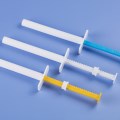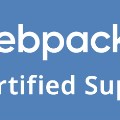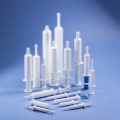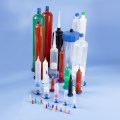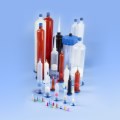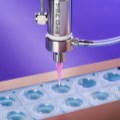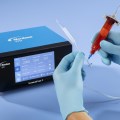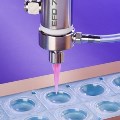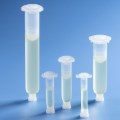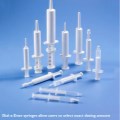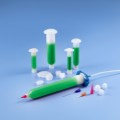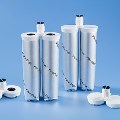Public
Nordson EFD Catalog
Nordson EFD Catalog for Animal Health Solutions
Nordson EFD Certificates
Nordson EFD Links
Nordson EFD Locations
Nordson EFD News
Nordson EFD Videos
If this is your company, CONTACT US to activate Packbase™ software to build your portal.


As you evaluate your manufacturing processes, it is important to remember that sometimes one small change can lead to a significant improvement in reducing waste, improving production speed, improving operator health and safety, or even just reducing cleanup, maintenance, or energy costs.
In the first part of this series, we explored examples regarding spraying and coating and filling. In this part, we discuss the next three examples, which demonstrate efficient bonding techniques.
Bonding
From four lines to six in the same amount of space
It is not only the products themselves that are getting smaller as technology advances. The equipment used to make those products is also evolving and getting smaller.
A medical device manufacturer that switched to smaller-footprint valves, without compromising dispensing performance, was able to increase output by 50% because it could install a greater number of valves in the same area within the machine. This same company was also able to reduce its machine real estate requirements when it ultimately added two additional lines in the same space that occupied four production lines.
Key takeaway: Size is not an indication of quality. High quality performance can be realized from smaller products, allowing you to maximize your investment on the production floor.
Nordson EFD Solutions: xQR41 needle valves
From one curing method to another
In this example, a medical device manufacturer switched from UV curing to LED curing. Because LED curing is faster and uses less power, the company reduced power consumption and sped up the curing process.
In addition to being energy efficient, LED lamps also have a longer life and require less maintenance. Plus, their operating temperature is low, which results in a safer work environment. LED curing is safe for the environment as well and is completely mercury and ozone free. Making changes such as this allows companies to demonstrate their commitment to green initiatives and sustainability.
Key takeaway: Incorporating the latest technological advances into your process can save energy, promote a safer workspace, and benefit the environment.
From contact to non-contact
Significant cost savings can be realized by rethinking the way fluid is applied to a surface. If you are using a contact dispensing method, which requires equipment that can move a dispensing valve up or down on a Z-axis, consider whether it would be more efficient to jet the fluid.
One medical device manufacturer who switched from a contact dispensing to a jetting increased throughput by 50% and achieved better process control.
Switching to non-contact jetting can result in cost savings by eliminating the need to move the dispensing device up and down, which can in turn allow the production line to run faster. It can also reduce setup time and increase product flexibility because more than one product can be produced on the same line.
Key takeaway: Consider alternative dispensing methods to speed production for higher throughput yields.
Nordson EFD Solutions: PICO Pµlse jetting valves


